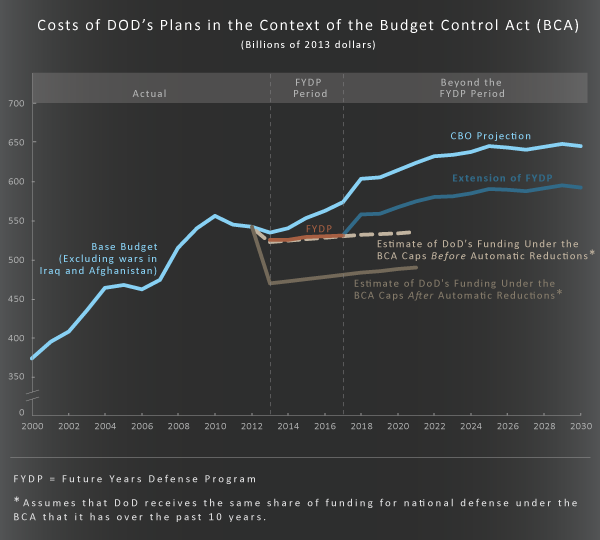CBO Projects DoD's Plans Will Cost More Than Their Estimates
Today, CBO has released yearly estimates of the long-term budget projections for the Department of Defense. The DoD provides a plan to Congress called the Future Years Defense Program (FYDP), in which DoD lays out its plans and the needed appropriations for the next five years. CBO uses this report to project future defense spending through 2030, using their own assumptions for variables like health care costs and weapons system prices that affect the defense budget.
Overall, the Pentagon will be ramping up spending on procurement over the next five years, as it is the fastest growing part of the budget. However, over the longer term, personnel costs -- especially health care benefits -- are a major factor in spending growth along with operation and maintenance costs.
When compared to the Pentagon's estimates of its plan, CBO's findings of the report are somewhat worrisome. CBO estimates that the costs associated with carrying out the FYDP are $14 billion higher in 2013 than the original caps in the Budget Control Act, even before the sequester is considered. Costs would be $66 billion higher in that year if the sequester is allowed to hit. Through 2021, the budget plan comes in $508 billion higher than the BCA caps before the sequester. Note that the Administration has said that it's cutting $487 billion from defense spending over ten years in order to comply with the BCA caps (although the two numbers aren't directly comparable).
A helpful graphic from CBO illustrates the gap between the cost of DoD's plans and what will be allocated to defense under current law.

CBO's estimates might be overly pessimistic since they do not incorporate the military's proposals for reducing health care costs. Also, it should be noted that CBO's assumptions for personnel and other costs are not necessarily more accurate than the Pentagon's, though they have less incentive to be optimistic about the costs.
Also important to remember is that Congress is the final authority on military appropriations and that these are just the cost of the military's proposed plans. Still, CBO's report shows that policymakers may have to search for more savings than previously thought if they are to stick to the agreed-upon caps for defense spending.

